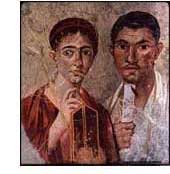Back
Latin Tutorial: 8. Writing Questions
- For sight passages, decide which words need to be glossed. For syllabus-based passages, gloss any alternate forms or variant spellings that may appear in textbooks.
- Work from previously written outline.
- Never use an incorrect Latin form in the distracters.
- Avoid "tricky" distracters that may cause confusion or appeal for the wrong reason (e.g., if a student is to identify a polysyndeton, avoid offering a hendiadys as a distracter since both rely on the use of conjunctions).
- When writing questions that test translation, avoid writing distracters that do not make sense and that sound far-fetched, even if they repeat words from the passage. Students should not be able to rule out options on the basis of logic alone.
- Try alternate ways of writing questions on the same words (e.g., grammar versus translation versus comprehension) to see which works best or which provides the most-needed item type.
- Check commentaries for different interpretations and avoid "forcing" one particular reading (e.g., what may be identified as a dative by one authority may be called an ablative by another, both for good reason). Avoid variable nomenclature (e.g., the same grammatical construction may be called indirect statement, indirect discourse, or accusative-infinitive construction in different textbooks).
- Write extra questions so as to create a pool from which to select the best items for each passage.
- Write a brief introduction that will help students put the passage into a context but will not give away answers to questions.
